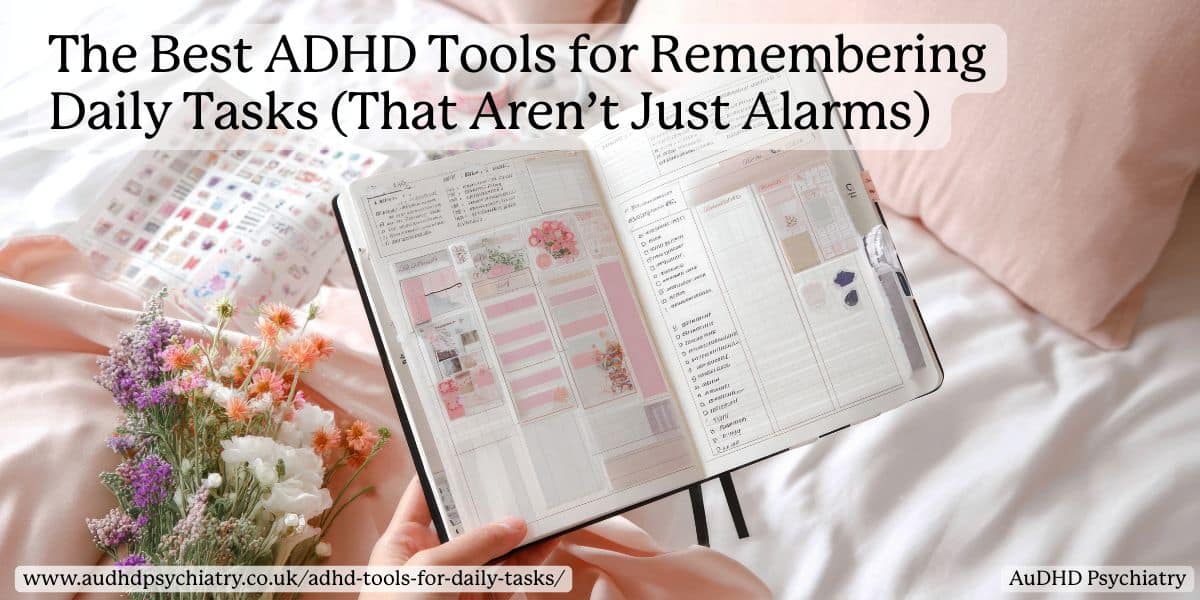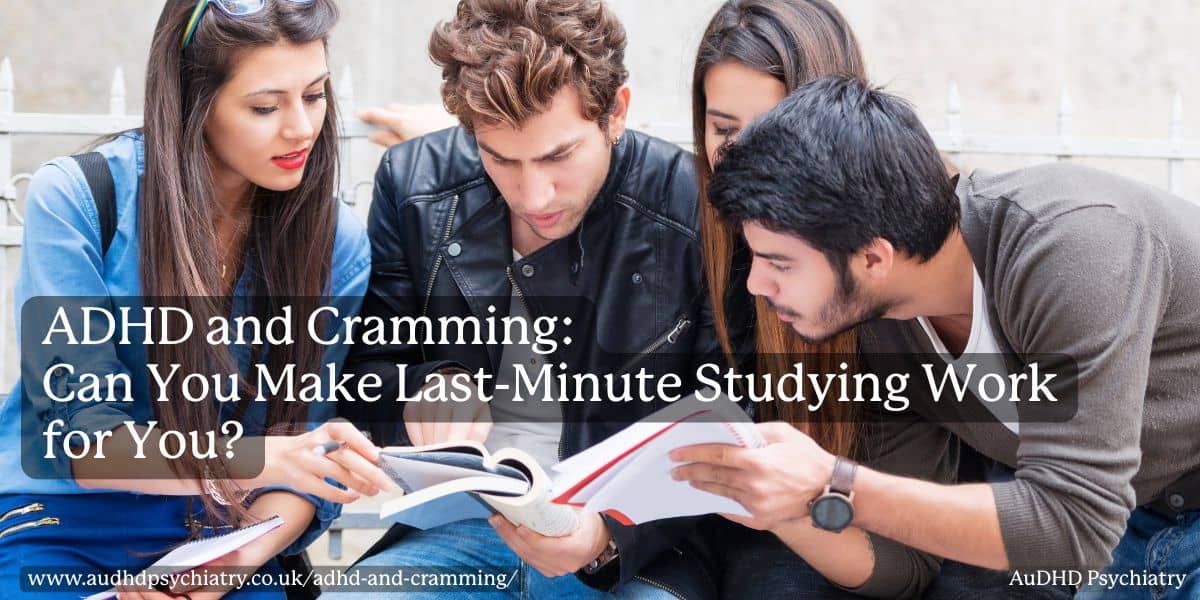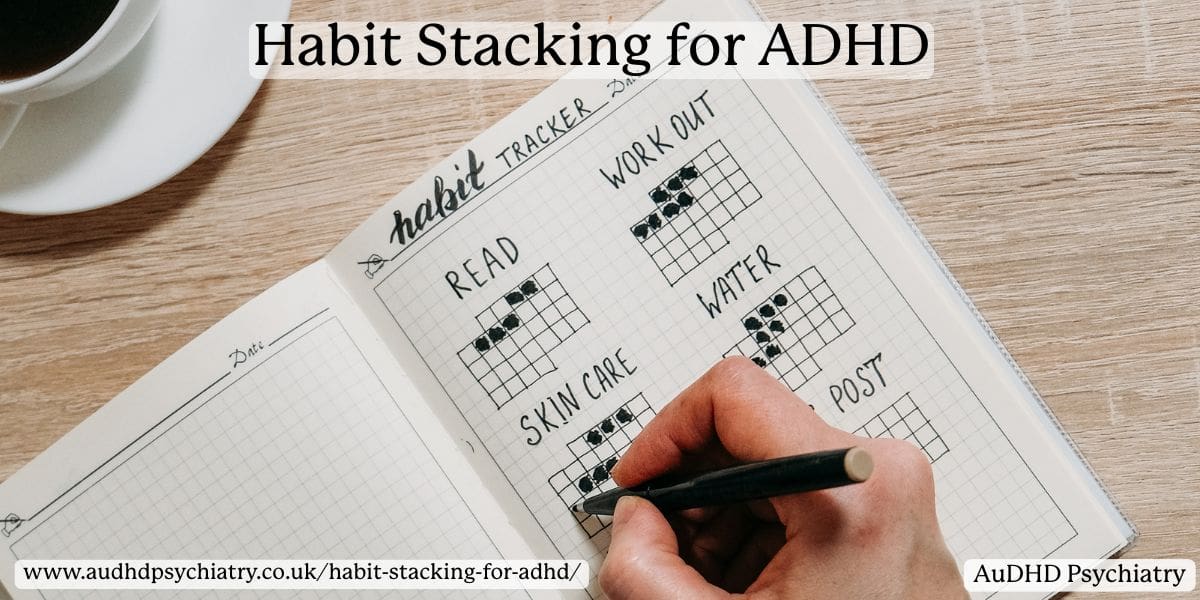
Do you find yourself forgetting simple tasks, even when you’re trying your best to stay organised? For many adults with ADHD, daily routines don’t fall into place easily. It’s not a matter of laziness or lack of effort. It’s often about how the ADHD brain manages attention, memory, and transitions.
Habit stacking is a practical strategy designed to work with those challenges. By linking a new behaviour to an existing habit, uch as taking medication right after brushing your teeth, the brain is given a clear, consistent cue to follow. This reduces the mental effort required to start something new.
In this article, we’ll look at why habit stacking is especially effective for ADHD minds, how it supports executive functioning, and what steps you can take to build reliable routines. You’ll also find real-world examples, helpful tools, and guidance fit for neurodivergent needs.
What Is Habit Stacking for ADHD?
Habit stacking is a method that helps embed new behaviours into your existing routine by attaching them to tasks you already do automatically. Instead of relying on memory or willpower, this approach uses what’s already familiar – such as boiling the kettle or brushing your teeth – as an anchor for a new, desired action. For adults with ADHD, this removes the need for constant reminders or exhaustive planning.
Why Does Habit Stacking Work for ADHD?
This method works by creating a predictable behavioural sequence. For example, placing a visual prompt such as a sticky note near your bathroom mirror can help cue a follow-up action, like taking medication immediately after brushing your teeth. Repetition over time allows the new behaviour to become more automatic, reducing the cognitive effort involved in task initiation.
Unlike broader behaviour change models, habit stacking addresses common executive functioning challenges seen in ADHD, including poor working memory, reduced task follow-through, and difficulty shifting attention. It is structured but adaptable, allowing individuals to introduce new habits without the pressure of rigid scheduling or overly complex systems.
What are the Long-term Benefits of Habit Stacking?
When done consistently, habit stacks can lead to significant improvements in daily functioning. They help reduce the friction often associated with starting tasks and create a sense of rhythm in an otherwise unpredictable day. Whether you’re trying to build healthier routines, improve time awareness, or simply get through your morning with less stress, habit stacking offers a simple yet powerful strategy to get started.
To explore practical ways to reinforce these strategies, our ADHD resources and tools section includes digital and printable options that support long-term habit development.

Why ADHD Makes It Hard to Build Habits
Adults with ADHD often face persistent difficulties in forming and maintaining habits, not due to a lack of discipline, but because of specific cognitive impairments that affect routine development. Central to this challenge is executive dysfunction, which is a disruption in processes such as planning, working memory, initiation, and sustained attention. Additional support, like ADHD coaching services, can help bridge these gaps by offering structure and personalised guidance.
What Factors Influence Building Habits in Individuals with ADHD?
One of the most common issues is task initiation. Individuals may understand what needs to be done but find it difficult to begin, often due to mental fatigue or competing cognitive demands. This is frequently exacerbated by time blindness, a phenomenon where individuals underestimate or lose track of time, leading to missed cues and inconsistent routines.
Neurological differences in reward processing also contribute. ADHD is closely associated with dopaminergic dysregulation, which impacts motivation and reinforcement. As a result, habits that do not offer immediate feedback or stimulation may be deprioritised in favour of more rewarding or novel tasks.
Additionally, the cumulative effects of decision fatigue and environmental distractions can make habit formation especially vulnerable to disruption. Even seemingly minor obstacles, such as remembering when to act, can become barriers when executive functioning is already strained.
What Can Help Those with ADHD Develop Habits?
Understanding these cognitive challenges is critical to selecting appropriate behavioural strategies. Rather than relying on conventional systems that prioritise structure and repetition alone, individuals with ADHD benefit more from approaches that integrate cues, reinforcement, and flexibility, such as habit stacking. For those seeking tailored support, ADHD coaching for adults can provide personalised strategies and accountability, and ensure seamless ADHD care transfer to make these routines stick.
If you’re not diagnosed with ADHD but unsure whether these challenges reflect an underlying pattern, you may wish to start with our free online ADHD assessment to explore your symptoms in more depth.
Why the Stacking Method Works for ADHD Brains
Many conventional habit-building strategies overlook the cognitive profile of ADHD. In contrast, habit stacking aligns closely with the way neurodivergent brains process information, reducing overwhelm, simplifying transitions, and making routines more sustainable over time.
Reducing Mental Load Through Predictability
One of the main benefits of habit stacking is that it removes the need for constant decision-making. ADHD is often accompanied by decision fatigue, which can erode motivation and delay task initiation. By linking new habits to already-established actions, individuals can reduce the mental effort required to plan or remember what comes next.
This predictable structure is particularly useful for individuals who struggle with executive functioning and attention regulation. Instead of initiating a task from a blank slate, the brain is prompted to act based on a familiar pattern, increasing the likelihood of follow-through.

Reward Sensitivity and Dopamine Regulation
The ADHD brain is also highly sensitive to rewards, particularly those that offer immediate feedback. Habit stacking supports this by creating short-term wins through repeated, achievable actions. Over time, this repetition can help reinforce motivation and increase engagement with tasks that might otherwise be deprioritised.
This is especially relevant for those navigating treatment decisions or lifestyle changes. If you’re interested in exploring your options further, you may find our overview of ADHD medication in the UK helpful in understanding how pharmacological and behavioural strategies can complement each other.
Key Benefits of Habit Stacking with ADHD
While habit stacking offers general benefits for many people, it provides distinct advantages for those managing ADHD-related impairments in daily life.
Cognitive Benefits
- Minimises cognitive strain: Linking tasks reduces the executive demand typically required to plan, remember, and act on new behaviours.
- Improves working memory: External and internal cues help offset the working memory deficits commonly seen in ADHD.
- Decreases task resistance: Repetitive stacking lowers activation energy needed to start tasks, making routines more accessible.
Habit stacking also creates neural efficiency over time. When a behaviour becomes automatic, it requires fewer cognitive resources, freeing up mental energy for more complex or unpredictable demands.
Functional and Emotional Benefits
- Supports routine development: Stacking behaviours around key parts of the day, such as waking, meals, or bedtime, fosters structure without the rigidity of traditional time-blocking.
- Improves task consistency: Actions feel less arbitrary and more part of a natural flow, leading to better follow-through.
- Reduces overwhelm: Fewer transitions mean fewer disruptions, which can help lower stress levels and emotional reactivity.
When implemented intentionally, habit stacks serve as built-in scaffolds for executive function. They promote long-term behavioural stability while adapting to the fluctuations that often occur in ADHD symptom presentation.
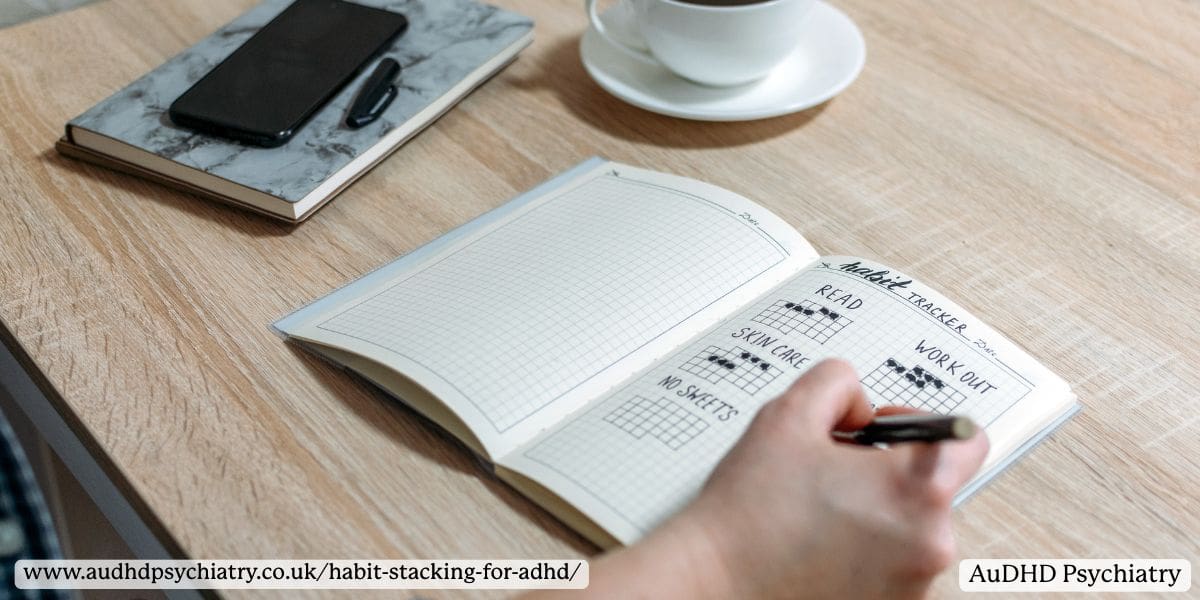
How to Start Habit Stacking the ADHD-Friendly Way
Creating sustainable routines with ADHD requires more than good intentions. It requires strategies that reduce friction, support executive functions, and fit within your existing day. Habit stacking achieves this by encouraging small changes that feel doable and build naturally over time.
Step 1: Identify a Current Habit You Already Follow
Start with a current habit you do reliably, such as brushing your teeth, making tea, or locking the front door. This becomes your anchor habit, the behaviour you’ll attach your new action to.
Step 2: Add One New, Helpful Habit
Choose a new habit that’s simple and relevant to your goals, such as taking medication, stretching, or writing down tomorrow’s to-do list. Keep it short. The goal is not to overhaul your day, but to embed one helpful habit into something you already do.
Step 3: Create a Visual or Sensory Cue
Use visual reminders like sticky notes, phone alarms, or setting items in sight to reinforce the task. These cues increase cue salience, making the habit easier to remember and initiate, especially when attention is inconsistent.
Step 4: Track and Reflect with Tools That Work for You
Many people find that habit-tracking apps provide enough visual feedback to keep new behaviours on track. Others prefer ADHD planners or whiteboards for ease of use. This process may take trial and error.
That’s why flexibility is essential. Your first habit stack doesn’t need to be perfect. What matters is making it a part of your routine, not a source of pressure. For practical support while experimenting, refer to our guide on using ADHD-friendly calendars.
Understanding the Habit Loop and ADHD Behaviour
At the core of habit stacking lies the habit loop — a sequence involving a cue, craving, action, and reward. Understanding how this loop works in the ADHD brain is key to building habits that stick.
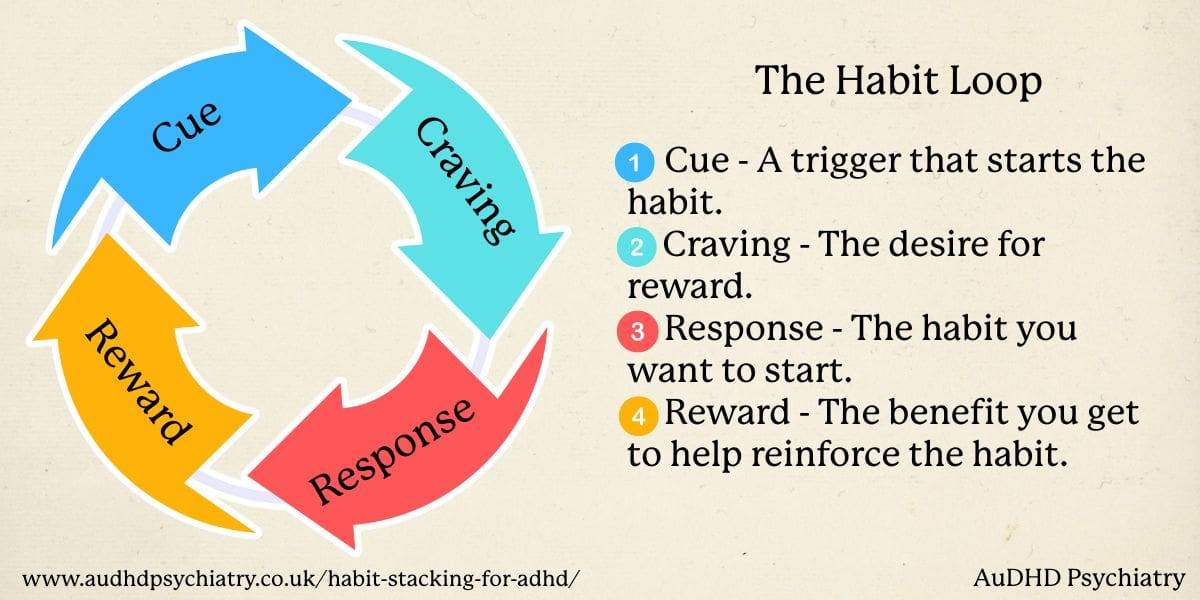
The cue is the signal that tells your brain to begin a behaviour. With ADHD, improving cue salience is essential. This could be a visual object (like a pillbox next to your toothbrush), a sound, or a location.
The craving is your brain’s desire to respond to that cue, often driven by dopamine-seeking behaviour. When motivation is low, habits that deliver short-term feedback are more likely to succeed.
The action is the behaviour itself, and the reward reinforces it. For ADHD brains, that reward needs to be noticeable, even if small, to trigger repetition. Celebrating partial wins, checking off a habit tracker, or earning a game-based reward can be enough to keep the loop going.
More on Why Habit Pairing Works for ADHD
Habit stacking essentially modifies the habit loop by pairing new tasks with an existing behavioural anchor. This process, sometimes called habit pairing, works well for individuals with ADHD because it reduces task initiation resistance and builds toward behaviours becoming second nature.
Over time, each repetition of the loop strengthens the new habit. The loop becomes embedded not because of rigid effort, but through strategic cues and simple repetition. It’s a simple yet powerful strategy for turning effortful actions into automatic responses.
Find more insights into how ADHD brains respond to feedback and structure by reading our article on ADHD and emotional dysregulation, which explains the emotional layer behind task avoidance and habit maintenance.
Using Visual and Environmental Cues to Reinforce Habits
Habit stacking is most effective when supported by environmental design. For individuals with ADHD, external cues play a helpful role in guiding attention and initiating action. Because the ADHD brain often struggles with internal time awareness and task sequencing, using the environment to provide consistent reminders can improve success significantly.
Visual Cues Support Memory and Initiation
As we’ve previously shared, visual reminders such as sticky notes, colour-coded planners, or object placement reduce reliance on working memory. Placing a water bottle on your desk or leaving medication beside your toothbrush are simple, effective tactics that tie habits to visible prompts.
These cues help automate tasks, so they become less mentally taxing to begin. By eliminating the need to think about what comes next, habit stacks are more likely to take hold.
Leverage Location-Based and Sensory Triggers
Location-based cues are particularly powerful. For example, if you want to add a new behaviour like writing a journal entry, try placing it in the same space where you drink your morning coffee. The location itself becomes part of the habit loop, helping to build routine consistency.
Some people also benefit from tactile or auditory cues, like using textured objects or timed alarms. These support individuals who struggle with difficulty focusing, especially when multiple distractions are present. Over time, these small environmental adjustments support building routines that require less mental energy and more natural flow.
What to Do When ADHD Habits Stop Working
Even the most carefully built habit stack can cause setbacks. This isn’t a failure. It’s a natural part of the process, especially for those managing ADHD challenges. Understanding why habits break down helps build resilience and encourages realistic adjustment.
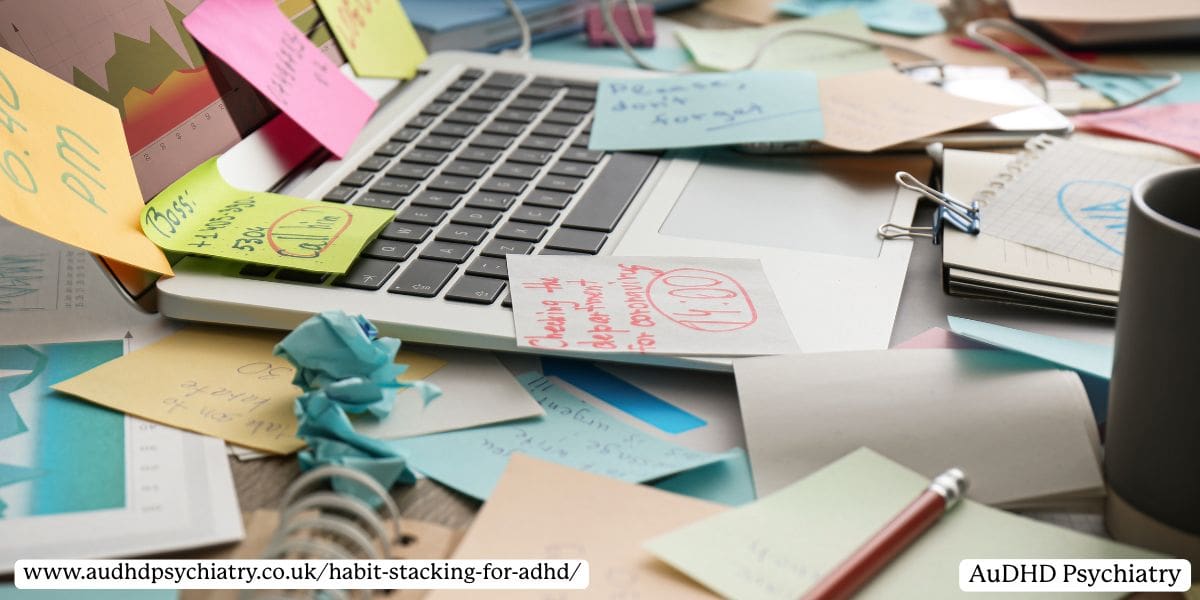
Common Reasons ADHD Habits Disrupt
One of the most frequent barriers is fatigue, both mental and physical. As cognitive load builds throughout the day, the ability to maintain effortful routines weakens. This can lead to avoidance, missed steps, or full disengagement.
Motivation also fluctuates significantly for many people with ADHD. Because motivation is closely tied to dopamine availability, the absence of rewards, especially immediate ones, can reduce engagement with a new habit, even if the long-term benefit is clear.
Changes in environment, stress levels, or routine disruptions can also impact habit stability, particularly if the original stack wasn’t well reinforced with cues.
Resetting, Not Abandoning
Rather than starting from scratch, review your habit stack and adjust one part at a time. Ask yourself:
- Was the new habit too ambitious?
- Were there enough visual cues?
- Could the reward be made more immediate?
Use this feedback to simplify the habit, add more support, or change its timing. Monitoring change using habit-tracking apps or journaling can also reveal patterns in success or disruption. These tools support tracking progress, making it easier to identify what works.
Habit Stacking Examples for ADHD Adults
While the theory of habit stacking is powerful, practical examples can make implementation easier. For adults with ADHD, it’s important to build simple yet meaningful routines that fit into different parts of the day without increasing overwhelm.
Morning Routines That Set the Tone
Mornings are ideal for pairing energising tasks with established actions. For example:
- After you make your morning coffee, set a timer for five minutes of planning or breathing exercises.
- When you brush your teeth, place a glass of water beside your sink to encourage hydration before heading out.
These stacks support daily habits while minimising decision fatigue and helping you start the day with structure.
Midday Stacks That Maintain Momentum
By the afternoon, energy may dip. Pairing light activities with essential tasks helps maintain focus:
- During your lunch break, try stacking in five minutes of stretching or stepping outside.
- While waiting for the kettle to boil, glance over your calendar or check off completed tasks in your habit-tracking app.
This approach supports maintaining routines without requiring a whole new block of effort.
Evening Routines That Wind You Down
Evening stacks can encourage relaxation and closure:
- After changing into pyjamas, review your top 3 priorities for the next day.
- Pair herbal tea with journaling or listening to a favourite podcast.
These stacks promote healthy habits while reducing late-night decision-making.
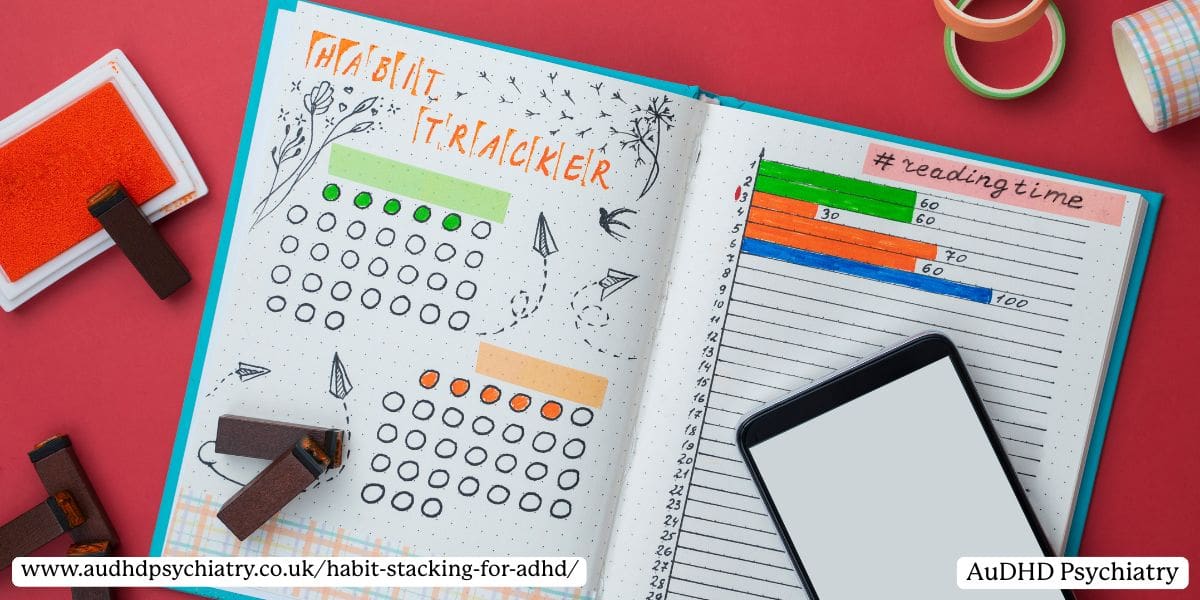
ADHD Tools and Apps for Building Better Habits
Effective habit stacking often relies on the right tools, especially for those managing ADHD. Whether you use a digital or paper-based habit-tracking tool, it can help enhance consistency by offering visual feedback, built-in reminders, and progress markers that reduce the need for mental self-monitoring.
Key Features to Look for in a Habit Support Tool
For adults with ADHD, the most helpful tools are those that support executive functioning without creating additional overwhelm. When selecting a habit tracker or routine planner, look for features such as:
- Visual layout – colour-coded progress bars, checklists, or icon systems to help track habits at a glance
- Minimal steps to update – tools should require little effort to use, especially during times of low energy or focus
- Reminders – built-in notifications that prompt you at the right time or location, reducing missed actions
- Flexibility – the ability to pause, edit, or reset habits without losing progress
- Positive reinforcement – visual or verbal encouragement for task completion, supporting motivation through short-term rewards
- Portable formats – mobile-friendly apps or physical planners that are easy to access during transitions
Balancing Tools with Personal Routines
Some individuals benefit from visual cue boards or physical checklists, especially when screen use feels overwhelming. Others prefer digital planners that integrate with calendars or to-do lists. There’s no one-size-fits-all solution. The goal is to find a system that complements your environment and routine style.
Habit Stacking for ADHD: Conclusion
For many adults with ADHD, habit formation is more challenging due to difficulties in executive functioning, task initiation, and sustaining daily habits. Traditional behaviour change strategies often require high levels of planning and follow-through, which can become barriers for neurodivergent individuals. Habit stacking addresses these challenges through a simple yet powerful strategy: anchoring a new action to a behaviour that’s already part of your daily routine.
When designed carefully, habit stacks can promote meaningful habits without adding extra decision-making or pressure. By focusing on small changes, supported by visual cues, location-based triggers, and routines tied to context, such as brushing your teeth or preparing morning coffee, you create a system that works with, not against, your ADHD brain.
In the long run, stacking habits this way helps improve consistency, reduce overwhelm, and encourage lasting personal growth. Using habit-tracking apps, visual schedules, or low-effort tools also supports maintaining routines, especially when combined with positive reinforcement and regular reflection.
If you’re ready to build better habits and reduce the cognitive load of daily tasks, start by identifying a current routine you already follow. Then pair it with a new habit that aligns with your goals. For more structured support, you can book a call with our team of experts to explore treatment and planning strategies designed to meet your needs.
To see how planners can complement your routines, check out our blog on Digital vs. Paper Planners.
You Might Also Like
Contact Us
We’re here to answer any questions you might have.
Get in Touch
Opening Hours
Contact Form
We’re here to help. Reach out and we’ll get back to you within 24 hours (Monday – Friday).


